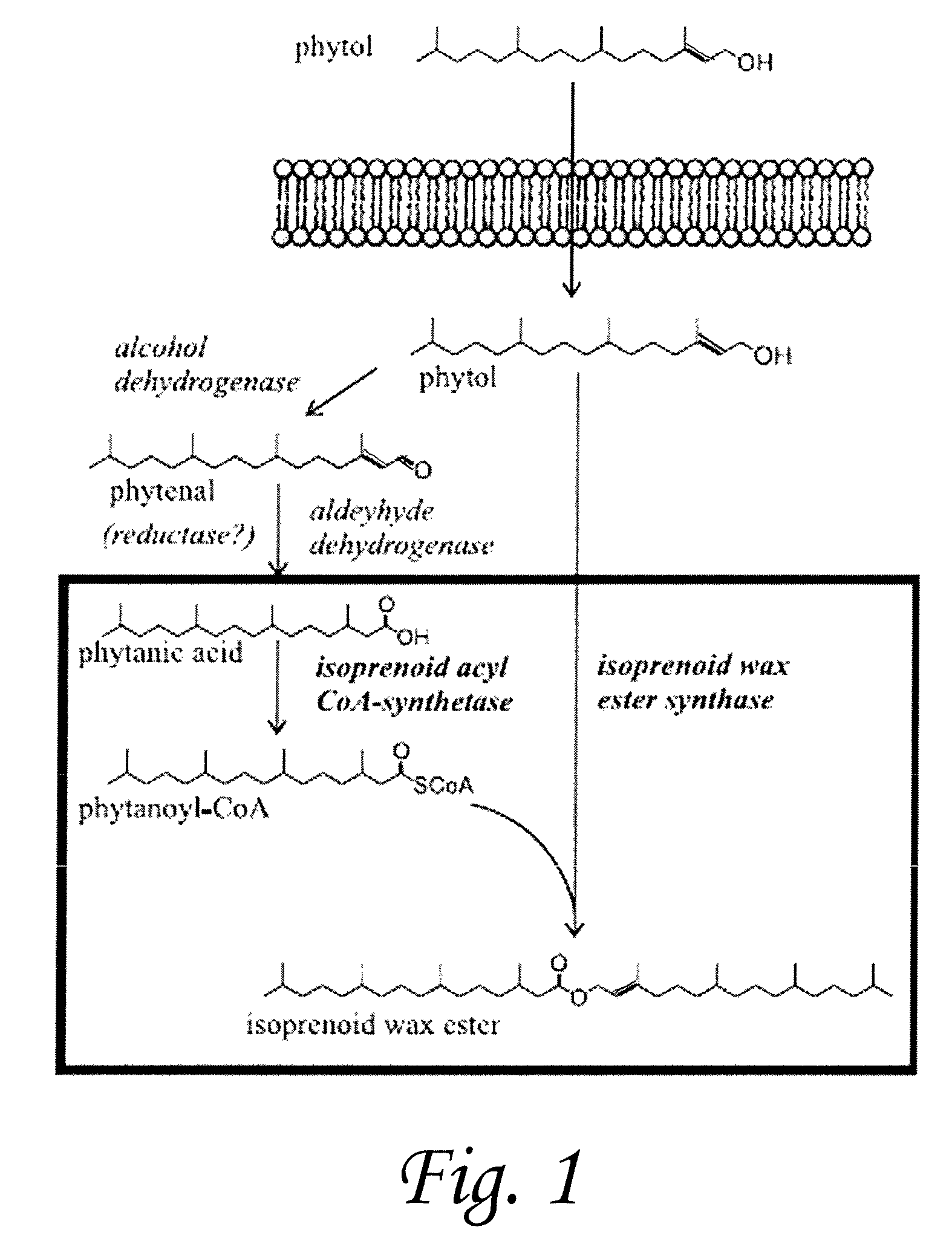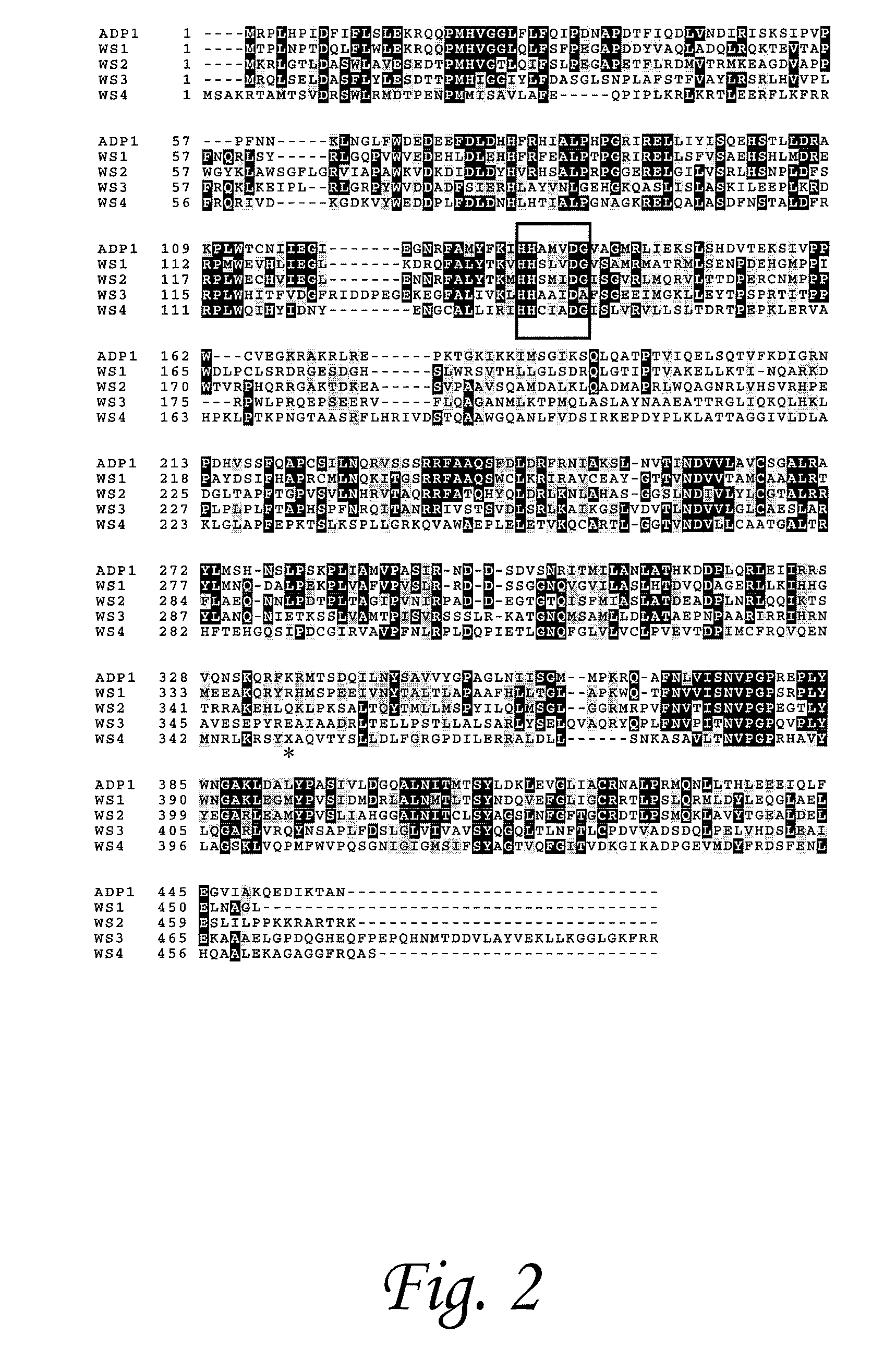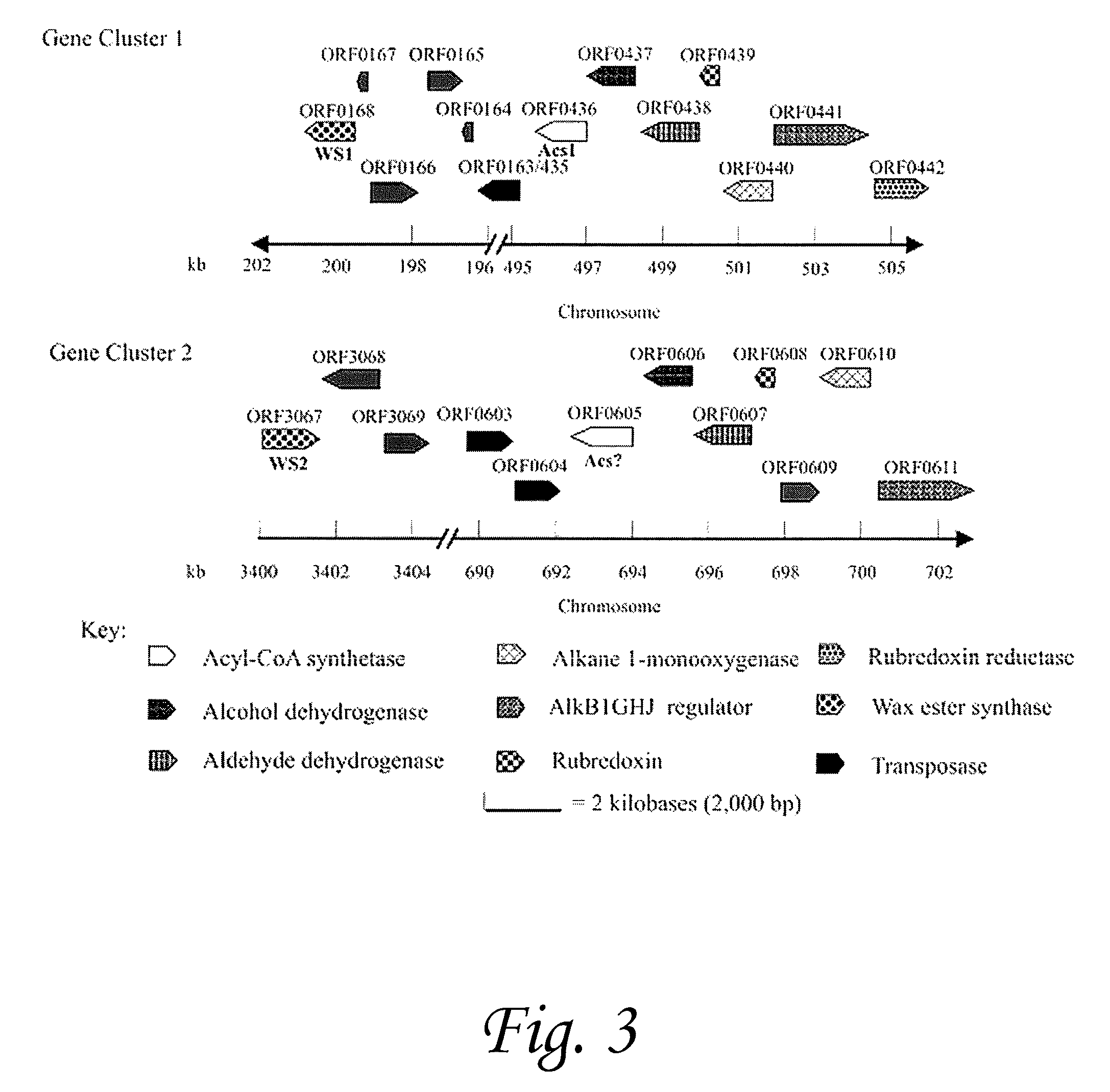Isoprenoid wax ester synthases, isoprenoid acyl CoA-synthetases, and uses thereof
a technology of isoprenoid wax ester and acyl coasynthetase, which is applied in the direction of enzymology, ligases, transferases, etc., can solve the problems of affecting the wide use of petroleum products, affecting the effect of carbon emissions and the burning of petroleum products, and affecting the effect of global warming
- Summary
- Abstract
- Description
- Claims
- Application Information
AI Technical Summary
Benefits of technology
Problems solved by technology
Method used
Image
Examples
example 1
Biosynthesis of Isoprenoid Wax Ester in Marinobacter hydrocarbonoclasticus DSM 8798: Identification and Characterization of Isoprenoid Coenzyme A Synthetase and Wax Ester Synthases
[0108]Marinobacter hydrocarbonoclasticus DSM 8798 has been reported to synthesize isoprenoid wax ester storage compounds when grown on phytol as the sole carbon source under limiting nitrogen and / or phosphorous conditions. We hypothesized that isoprenoid wax ester synthesis involves (i) activation of an isoprenoid fatty acid by a coenzyme A (CoA) synthetase and (ii) ester bond formation between an isoprenoid alcohol and isoprenoyl-CoA catalyzed, most likely, by an isoprenoid wax ester synthase similar to an acyl wax ester synthase, wax ester synthase / diacylglycerol acyltransferase (WS / DGAT), recently described from Acinetobacter sp. strain ADP1. We used the recently released rough draft genome sequence of a closely related strain, M. aquaeolei VT8, to search for WS / DGAT and acyl-CoA synthetase candidate ge...
example 2
In Vitro Production of a Fatty Acid Alkyl Ester
Materials and Methods
[0147]Protein expression and purification—Cultures (100 ml) of E. coli JM109 transformed with pUCmod expressing putative His6-tagged CoA synthetase (Acs2) or Wax ester synthase (WS2) were grown in LB media supplemented with 100 μg of ampicillin / ml at 30° C. overnight in 500-ml unbaffled flasks. The His6 tags were present on the C-terminal end of each protein. Cells were harvested by centrifugation and resuspended in 10 ml of 50 mM Tris-HCl buffer (pH 8). The cells were lysed by sonication (Branson, Danbury, Conn.) on ice using a 30% duty cycle consisting of 10 seconds on and 30 seconds off for 10 cycles. Cell lysates were spun down at a centrifugal force of 13,763 g in 50-ml Oakridge tubes in a Beckman J2-HS floor centrifuge equipped with a JA-17 rotor for 30 min at 4° C. The supernatant was applied to immobilized metal affinity chromatography Talon resin (Clontech, Mountain View, Calif.) and washed with 10 mM imida...
example 3
[0151]Heterologous Expression of M. hydrocarbonoclasticus Wax Ester Synthase (WS2) in Saccharomyces cerevisiae YGL035c for the Biosynthesis of the Fatty Acid Ethyl Ester, Ethyloleate
[0152]Biodiesel is currently being developed as an alternative energy source. It is chemically similar to petroleum-based diesel fuel. The current methods to produce it are by transesterification of triacylglycerols from plant oils. These molecules are monoalkyl esters of long-chain fatty acids with short-chain alcohols such as fatty acid methyl esters (FAMEs) and fatty acid ethyl esters (FAEEs). However, regardless of the numerous environmental benefits, a broader use of biodiesel is held back by excessive farmland required for sufficient production of vegetable oil crops.
[0153]Therefore, biotechnological processes are needed to enable biodiesel production from more readily available bulk plant materials like sugars or cellulose. In previous work, E.coli that were heterologously expressing ADP1 acyltran...
PUM
| Property | Measurement | Unit |
|---|---|---|
| ionic strength | aaaaa | aaaaa |
| temperature | aaaaa | aaaaa |
| temperature | aaaaa | aaaaa |
Abstract
Description
Claims
Application Information
 Login to View More
Login to View More - R&D
- Intellectual Property
- Life Sciences
- Materials
- Tech Scout
- Unparalleled Data Quality
- Higher Quality Content
- 60% Fewer Hallucinations
Browse by: Latest US Patents, China's latest patents, Technical Efficacy Thesaurus, Application Domain, Technology Topic, Popular Technical Reports.
© 2025 PatSnap. All rights reserved.Legal|Privacy policy|Modern Slavery Act Transparency Statement|Sitemap|About US| Contact US: help@patsnap.com



